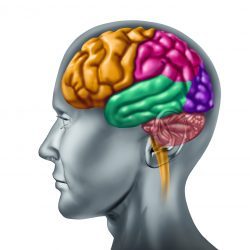“The measure of greatness in a scientific idea is the extent to which it stimulates thought and opens up new lines of research.” Paul A.M. Dirac
Start of the story: Anyone with Parkinson’s is hopeful for a cure in the future. Yet, there is much we still do not understand about this neurodegenerative disorder. Scientists and physicians are still working out the genetics, biochemistry, etiology (the cause of a disease), and pathogenesis [chapter and verse (i.e., story) of how a disease develops].
Two recent findings have provided a new clue to the cause (etiology) and story (pathogenesis) of Parkinson’s. The first finding was that mutation of the alpha (α)-synuclein gene caused Parkinson’s. In 1912, the Neurologist Frederic Lewy identified unique neuropathological lesions (later termed Lewy bodies) in the substantia nigra region in brains of Parkinson’s patients. It has been known for sometime that Lewy bodies are abnormal aggregates of protein, which implies their occurrence in Parkinson’s is pathological (disease forming, involving or causing). The second finding was α-synuclein protein was a primary component of Lewy bodies. These intriguing observations suggest some sort of abnormal α-synuclein function is involved in Parkinson’s cause and story.
Shown below are two images of Lewy bodies; histological images done on brain tissue and viewed with a microscope. For further information on α-synuclein and Lewy bodies, please see: http://www.nia.nih.gov/alzheimers/publication/lewy-body-dementia/basics-lewy-body-dementia and http://www.nature.com/nature/journal/v388/n6645/full/388839a0.html and http://en.wikipedia.org/wiki/Lewy_body and https://www.michaeljfox.org/understanding-parkinsons/living-with-pd/topic.php?alpha-synuclein .
 Aggregated α-synuclein in Lewy bodies resembles the changes in cooking an egg: The function in the brain for α-synuclein remains unclear. However, when α-synuclein is found aggregated (also known as denatured) in the mid-brain substantia nigra it contributes to Parkinson’s. α-Synuclein is a protein, and sometimes unusual forces cause proteins to interact in a detrimental manner, and in this case by aggregation of α-synuclein to create the Lewy body.
Aggregated α-synuclein in Lewy bodies resembles the changes in cooking an egg: The function in the brain for α-synuclein remains unclear. However, when α-synuclein is found aggregated (also known as denatured) in the mid-brain substantia nigra it contributes to Parkinson’s. α-Synuclein is a protein, and sometimes unusual forces cause proteins to interact in a detrimental manner, and in this case by aggregation of α-synuclein to create the Lewy body.
This α-synuclein aggregation is similar to the dynamic changes that happen to eggs when you mix them, beat them or heat/boil them; egg proteins are aggregated and denatured by these processes. When you open the egg, there are proteins holding together the egg yolk and egg white regions. By mixing, beating or heating eggs, one creates unusual interactions for egg proteins that lead to aggregation. Shown below are four images of eggs (fresh from the shell, beat to scrambled, fried and boiled, respectively). Much of the important role for eggs in cooking is due to these egg proteins aggregating from these structural perturbations (for a cool review on egg chemistry see: https://www.exploratorium.edu/cooking/eggs/eggscience.html ). While we have a good understanding of the food chemistry of eggs and their proteins, we are now making tremendous gains of knowledge concerning the disease-causing role of α-synuclein aggregation (Lewy body) in Parkinson’s (also see: http://www.ncbi.nlm.nih.gov/pmc/articles/PMC3281589/ ).
 Targeting α-synuclein to slow or halt progression of Parkinson’s: An antibody that recognizes and binds to α-synuclein, named PRX002, is being studied in Parkinson’s. The goal is straightforward, inject PRX002 and let the body’s immune system eliminate the antibody:α-synuclein complex. The aim is that by reducing the α-synuclein level in the brain of Parkinson’s patients, the disease progression could be halted or at least slowed.
Targeting α-synuclein to slow or halt progression of Parkinson’s: An antibody that recognizes and binds to α-synuclein, named PRX002, is being studied in Parkinson’s. The goal is straightforward, inject PRX002 and let the body’s immune system eliminate the antibody:α-synuclein complex. The aim is that by reducing the α-synuclein level in the brain of Parkinson’s patients, the disease progression could be halted or at least slowed.
The following excerpt comes from the company’s press release (http://www.prothena.com/pipeline/prx002-for-parkinsons-disease/ ): “An Investigational New Drug application, or IND, for PRX002 was filed and accepted by the FDA in March 2014. Together with Roche, we initiated a Phase 1 clinical trial for PRX002 for the treatment of Parkinson’s disease in April 2014. This initial Phase 1 clinical trial of PRX002 was a randomized, double-blind, placebo-controlled, single ascending dose study in healthy subjects. It was designed to assess PRX002 for safety, tolerability, pharmacokinetics and immunogenicity. In March 2015, we announced top line results from that trial, which showed that PRX002 was safe and well-tolerated, meeting the primary objective of the study. Further, results from this study showed that administration of PRX002 leads to mean reduction of free serum alpha-synuclein levels of up to 96%. These overall results were highly statistically significant (p<0.00001). Reduction of free serum alpha-synuclein, a protein potentially involved in the onset and progression of Parkinson’s disease and the target of PRX002, was shown to be robust, rapid and dose-dependent after just a single dose.”
Science of the α-synuclein story: As a long-time academic researcher, reading about α-synuclein revealed to me that those involved in this research have remarkable scientific insight. We all want a cure for Parkinson’s, but to date there is none. Science gains seem to crawl to the public’s eye, but we learn in increments of advancement. The science of α-synuclein and Lewy bodies, followed by the initial clinical trial results are truly promising. This also mandate that we remain patient while these scientists and clinicians gather their data/results.
I have Parkinson’s and I am not the most patient person. However, the science story of α-synuclein in Parkinson’s leaves me hopeful. The better we understand the cause (etiology) and chapter and verse (pathogenesis) of Parkinson’s, the more complete of an ending to our story will ultimately be achieved.
“If we knew what it was we were doing, it would not be called research, would it?” Albert Einstein
*Cover photo credit: Tina Alvarez



5 Replies to “The Alpha-Synuclein Story In Parkinson’s”